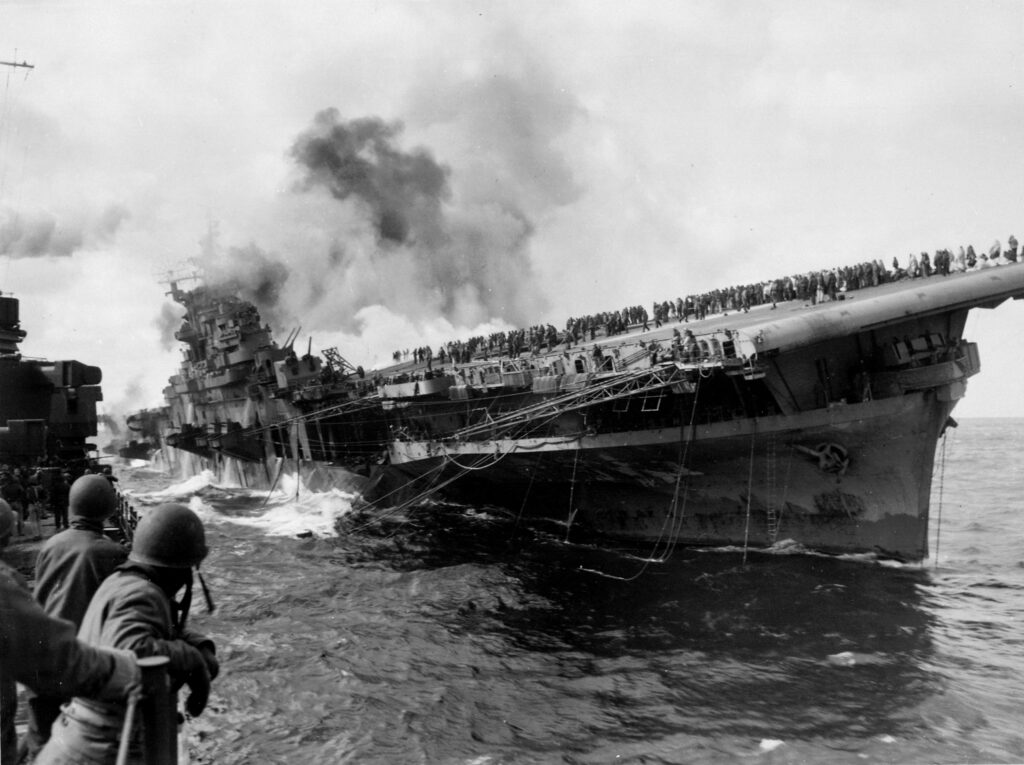World War II, the deadliest and most widespread conflict in human history, unfolded between 1939 and 1945, involving nations across the globe. Fueled by political, economic, and territorial tensions, the war reshaped the world order and left an indelible mark on the course of history.
Roots of the Conflict:
The aftermath of World War I set the stage for World War II. The Treaty of Versailles in 1919 imposed harsh conditions on Germany, leading to economic instability and fostering the rise of Adolf Hitler and the Nazi Party. In the 1930s, Hitler’s expansionist ambitions became evident with the annexation of Austria and Czechoslovakia.
In 1939, Germany’s invasion of Poland marked the beginning of the conflict. The invasion prompted Britain and France to declare war on Germany, setting off a chain reaction of alliances and conflicts that eventually engulfed much of the world.

Blitzkrieg and Axis Expansion (1939-1941):
The early stages of the war witnessed Germany’s Blitzkrieg strategy, characterized by rapid and overwhelming attacks. Poland fell quickly, followed by Denmark and Norway. In 1940, Hitler’s forces invaded France, resulting in the evacuation of British and Allied troops from Dunkirk.
The Axis powers, led by Germany, Italy, and Japan, formed a military alliance. Japan, seeking to expand its influence in Asia, invaded China and later targeted Southeast Asian territories rich in resources. Italy, under Benito Mussolini, aimed to establish a new Roman Empire in the Mediterranean.
Turning Points:
The Battle of Britain in 1940 marked a turning point as the Royal Air Force successfully defended Britain against German air attacks. Meanwhile, Hitler broke the Molotov-Ribbentrop Pact with the Soviet Union and launched Operation Barbarossa in 1941, leading to a brutal Eastern Front.
The attack on Pearl Harbor by Japan on December 7, 1941, brought the United States into the war. The U.S. became a key Allied power, joining forces with Britain, the Soviet Union, and other nations committed to defeating the Axis.
The Holocaust and Total War:
One of the darkest chapters of World War II was the Holocaust, in which six million Jews, along with millions of others, were systematically persecuted and murdered by the Nazis. The genocide included mass shootings, forced labor, and extermination camps, revealing the depths of human cruelty.
The war effort became a total war, impacting civilian populations on an unprecedented scale. Cities were bombed, and civilians faced hardships as nations mobilized their entire populations for the war effort. Women entered the workforce in large numbers, contributing significantly to the war industry.
Allied Advances and Axis Retreat (1942-1944):
The tide of the war began to turn in favor of the Allies in 1942. The Battle of Stalingrad marked a significant Soviet victory, and the Allies launched successful offensives in North Africa and the Pacific. The D-Day landings on June 6, 1944, marked the beginning of the end for Nazi Germany as Allied forces landed in Normandy.
Simultaneously, in the Pacific, the U.S. engaged in a strategy of “island hopping,” gradually advancing towards Japan. The Battle of Midway in 1942 and the island-hopping campaign in the Pacific shifted the balance against Japan.

The Endgame and Aftermath (1944-1945):
As Allied forces closed in on Germany and Japan, the war entered its final stages. In 1945, the Allies liberated concentration camps, revealing the full horror of the Holocaust. The Yalta and Potsdam conferences solidified plans for post-war reconstruction and established the framework for the division of Germany.
In the Pacific, the U.S. dropped atomic bombs on Hiroshima and Nagasaki in August 1945, leading to Japan’s unconditional surrender. These events marked the beginning of the nuclear age and the start of the Cold War between the United States and the Soviet Union.
Legacy:
World War II’s impact was profound and far-reaching. The creation of the United Nations aimed to prevent future global conflicts, and the war’s aftermath led to the decolonization of Asia and Africa. The war’s devastation spurred efforts to rebuild and establish institutions to promote international cooperation.
The lessons of World War II continue to shape international relations, emphasizing the importance of diplomacy, collective security, and human rights. The war’s memory serves as a reminder of the cost of unchecked aggression and the enduring quest for global peace and stability.
